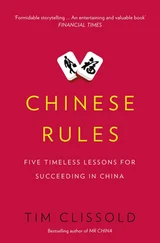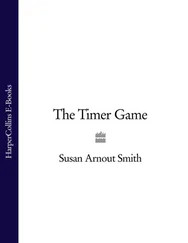Tim Gunn - Gunn's Golden Rules
Здесь есть возможность читать онлайн «Tim Gunn - Gunn's Golden Rules» весь текст электронной книги совершенно бесплатно (целиком полную версию без сокращений). В некоторых случаях можно слушать аудио, скачать через торрент в формате fb2 и присутствует краткое содержание. Город: New York, Год выпуска: 2010, ISBN: 2010, Издательство: Gallery Books, Жанр: Психология, на английском языке. Описание произведения, (предисловие) а так же отзывы посетителей доступны на портале библиотеки ЛибКат.
- Название:Gunn's Golden Rules
- Автор:
- Издательство:Gallery Books
- Жанр:
- Год:2010
- Город:New York
- ISBN:978-1-4391-7656-6
- Рейтинг книги:4 / 5. Голосов: 1
-
Избранное:Добавить в избранное
- Отзывы:
-
Ваша оценка:
- 80
- 1
- 2
- 3
- 4
- 5
Gunn's Golden Rules: краткое содержание, описание и аннотация
Предлагаем к чтению аннотацию, описание, краткое содержание или предисловие (зависит от того, что написал сам автор книги «Gunn's Golden Rules»). Если вы не нашли необходимую информацию о книге — напишите в комментариях, мы постараемся отыскать её.
Gunn's Golden Rules — читать онлайн бесплатно полную книгу (весь текст) целиком
Ниже представлен текст книги, разбитый по страницам. Система сохранения места последней прочитанной страницы, позволяет с удобством читать онлайн бесплатно книгу «Gunn's Golden Rules», без необходимости каждый раз заново искать на чём Вы остановились. Поставьте закладку, и сможете в любой момент перейти на страницу, на которой закончили чтение.
Интервал:
Закладка:
The year began with the crystallization of each student’s thesis: five to seven head-to-toe looks that represented their point of view as a designer. (It was Joan Kaner, the celebrated style maven and former vice president of Neiman Marcus, who once said to me, “I can tell everything that I need to know about a designer from five looks.” I think about that all the time.)
Those looks were executed in muslin (an unbleached cotton fabric used for prototyping) in a corresponding course that was appropriately called Studio Methods. I would visit that class on a regular basis, especially during fittings, which happened every two weeks.
On the topic of fittings, I forbade my students from designing for themselves or using themselves as fit models for their collection. Why? Because when you wear your own designs, you lose objectivity. It’s important that each designer maintain a well-honed ability to critically analyze his or her own work. If you’re only ever designing for your own body, you’d better be prepared to have a clientele of one.
I like the Project Runway Season 7 designer Ping Wu, who famously used herself as a mannequin, as a person even though she’s exhausting to be around. She has so much personality. When I told her at the end of Episode 3, “The workroom won’t be the same without you,” I meant it! I had to talk Jesse LeNoir off a ledge during their team challenge. He’s a lovely guy and quite talented. He recognized many of the problems the judges saw, but he couldn’t convince Ping to fix them.
When we had the auditions, I found her work compelling but her pieces were all hand knits. I said, “How do you translate this to Project Runway ? Would you do sewn knits? They won’t have the same Möbius-strip quality.”
In some ways I think she was handicapped by being a hand-knit designer, and by using herself as a dress form. As you may remember, in Episode 2, the model’s rear end was hanging out of her skirt. It was vulgar. Ping’s practice of using herself as a model clouded her objectivity. I think that’s a big part of why she made it only to Episode 3.
One instance in which “make it work!” came in particularly handy was during the spring semester of 2002. One of my students, Emma, was seriously struggling with the silhouette and proportions of the items that made up the looks in her collection. We had three fit models before us, and frankly, the collection was a hot mess.
I was struggling, too, in my efforts to get Emma to see solutions. What exactly was it that was so wrong? Even I couldn’t describe it. The only word that came to mind was everything. She was frustrated to the point of tears when she declared that she was going to throw everything away and begin again from scratch.
“You are not starting over,” I responded. “Besides, even if I agreed that you should, you’ve put twenty-five weeks into this collection, and it will be presented to the thesis jury in a month. It will be impossible to present anything of quality in that short amount of time.” (This was before Project Runway, which would recalibrate my thinking about time!)
“Then what am I going to do?” Emma asked, looking at me helplessly.
“You don’t have time to reconceive your designs, to shop for new fabric, or to make new muslins,” I replied. “You’re going to diagnose the issues with your collection and offer up a prescription for how to fix it. You don’t need to start from scratch! What’s at the core of this is working. The problems have to do with fit and proportion. Do you need to create new patterns? No! You need to take these existing pieces and retool them. You’re going to make it work!”
And she did. Emma’s collection was a success, and she learned so much from seeing it through.
If you look at the process of creating a work of art or a design as a journey of one hundred steps, steps one through ninety-five are relatively easy. It’s the last five that are hard. How do you achieve closure? How do you finish it? That’s the hard part.
MAKING IT WORK MEANS finding a solution to a dilemma, whether it’s a senior-year thesis collection, a difficult boss, or a flat tire. When my students made it work, they reached a new level of understanding about their abilities to successfully problem solve, and that gave them additional resources when moving forward to the next task at hand. When we figure a way out of a tricky situation in our own lives, we learn something and gain confidence in ourselves. Making it work is empowering.
On Project Runway, the phrase serves as a constant reminder of the seriousness of our deadlines and of the finite limitations of each designer’s material resources; in other words, when we return from shopping at Mood, that’s it. Whatever they purchased is what they have to execute the challenge. If they discover that they’re without some critical ingredient, then they’re stuck, and it’s “make-it-work” time.
There’s a big difference between my relationship with my students and my relationship with the Project Runway designers. When my students were in a jam, I could tell them what to do to get out of it. By decree, I cannot tell the Project Runway designers what to do, nor can I assist them in any way other than through words. I learned this the hard way.
During Season 1, Austin Scarlett was having difficulty threading one of the sewing machines. In my then state of naïveté, I sat down at the machine to help. After all the years I’ve spent around designers, I can thread a sewing machine with my eyes closed.
Within seconds, one of the producers called me out of the sewing room.
“What are you doing?” she asked. “You can’t do that.”
“It’s just a sewing machine,” I said. “It will take me one minute to fix.”
“But if you do that for Austin, then all of the other designers will expect you to do it for them,” she said. “And if you don’t, then it may be perceived that Austin had an unfair advantage.”
I hadn’t thought of that. She was right. I had to let go and watch the designers struggle. It took a little while, but eventually I got used to this new role as a hands-off mentor.
But I still enjoy being a hands-on instructor whenever I get the chance. I love how fresh young minds are, and I love watching them grow to take in new information. It’s so satisfying to see them come out the other end of the school year more sophisticated and closer to knowing what they need to know in order to accomplish their goals.
Truth be told, I never dreamed that I would become a career educator. In fact, it’s ironic, because growing up I hated school. And I do mean hated.
Don’t misunderstand me: I loved learning. As a child, I always had a million creative projects going on at home. But I hated the social aspects of school. I was a classic nerd with a terrible stutter. I preferred the sanctuary of my bedroom, and I was crazy about books because they transported me to another time and place (one far less oppressive than Beauvoir, the National Cathedral Elementary School in the 1960s, I can assure you). I was also crazy about making things: I was addicted to my Lincoln Logs, Erector Set, and especially my Legos.
I would spend almost all of my weekly allowance on Legos. And in my youth, Legos weren’t packaged in the prescriptive way they are now; they came as a bunch of anonymous blocks that you would purchase according to size and color, plus doors, windows, and, later—be still my beating heart—roof tiles.
As you can probably imagine, between my stutter and my fetishizing of Lego textures, at school I was taunted and teased. I knew that I wasn’t one of the cool kids, and I never tried to pretend otherwise. I was always the last kid picked for games at recess. (Perhaps it’s no wonder that I hate, loathe, and despise team sports even to this day.)
Читать дальшеИнтервал:
Закладка:
Похожие книги на «Gunn's Golden Rules»
Представляем Вашему вниманию похожие книги на «Gunn's Golden Rules» списком для выбора. Мы отобрали схожую по названию и смыслу литературу в надежде предоставить читателям больше вариантов отыскать новые, интересные, ещё непрочитанные произведения.
Обсуждение, отзывы о книге «Gunn's Golden Rules» и просто собственные мнения читателей. Оставьте ваши комментарии, напишите, что Вы думаете о произведении, его смысле или главных героях. Укажите что конкретно понравилось, а что нет, и почему Вы так считаете.











